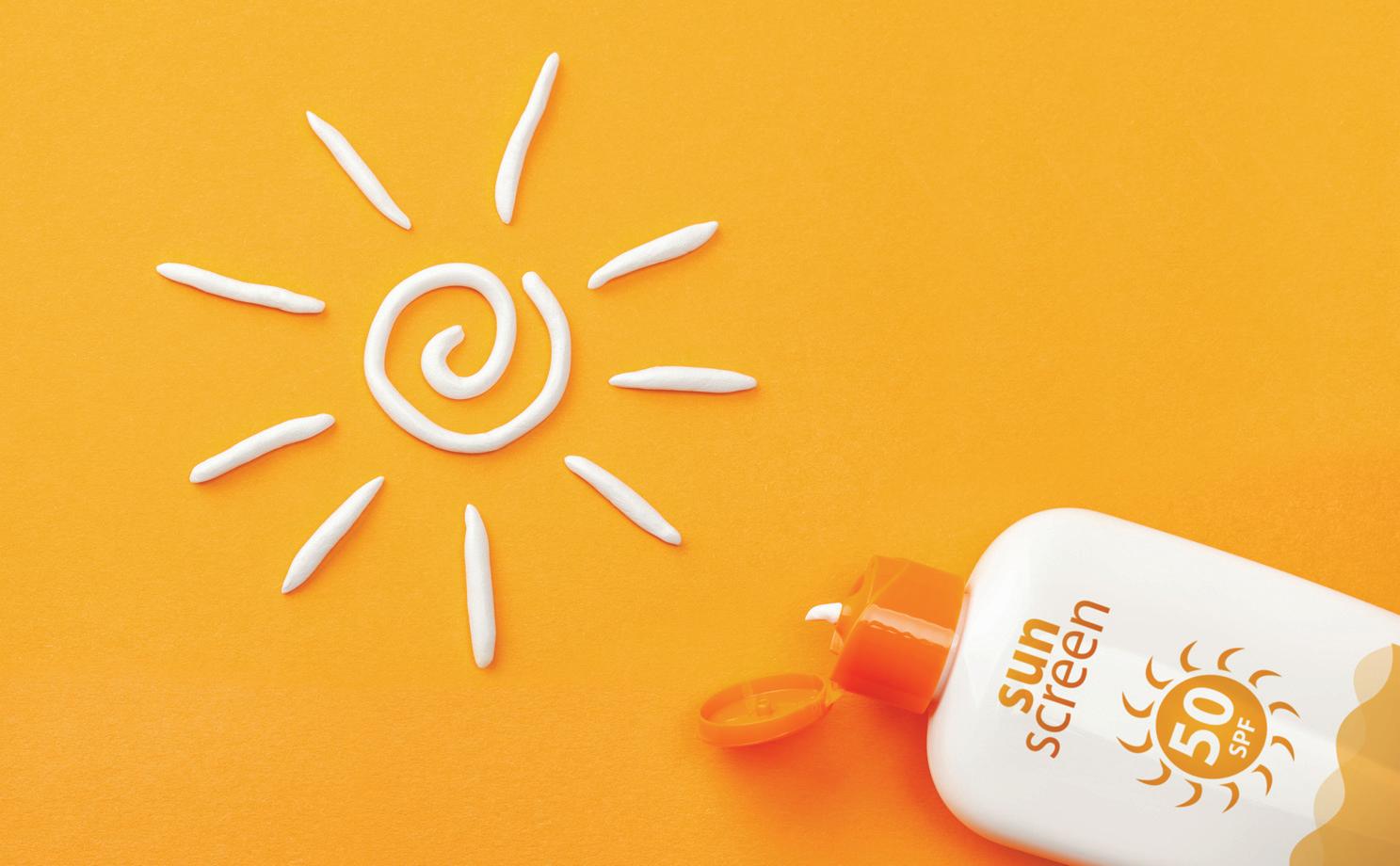
2 minute read
Playing it Safe in the Sun
Kate Romano, licensed, oncology-trained esthetician.
Now that warm weather is here, it is time to up your sun protection game. Follow these tips to keep safe while having fun in the sun.
Beware of ultraviolet rays
When we think of sun safety, most of us are trying to avoid a sunburn. Although that is important, it is only half the issue. We need to be concerned about two types of ultraviolet rays: UVB and UVA. It’s easy to tell them apart if you remember that UVB = burning and UVA = aging. UVB causes sunburns and mainly affects the epidermis, which is the outermost layer of skin. UVA affects the dermis, or lower layer of the skin, which causes premature aging and DNA damage. UVA is active year-round, even in cloudy weather conditions.
SPF stands for sun protection factor and measures the amount of UV radiation that produces a sunburn on protected skin. It doesn’t account for UVA rays, though, so in order to be protected from both UVB and UVA rays, you should look for “Broad Spectrum Protection” on the bottle when purchasing sunscreen.
Chemical sunscreens
Sunscreens come in two forms: chemical and mineral/physical. Chemical sunscreens work by absorbing into the skin to soak up the UV rays that are then released as heat. This process can take some time to work, which is why sunscreen directions advise applying 30 minutes before heading out into the sun. When dealing with healthcompromised skin, avoiding excess heat is prudent. Those undergoing chemotherapy, cancer therapy drugs or radiation can be more prone to photosensitivity, meaning you can quickly develop a bad skin reaction from being in the sun. In these cases, using mineral sunscreens would be advised.
Mineral sunscreens
Mineral sunscreen’s active component is zinc oxide or a combination of zinc and titanium dioxide that acts as a physical barrier. This doesn’t allow any penetration of UV rays into the epidermis or dermis. Therefore, it starts working as soon as it is applied. Zinc oxide is naturally a broadspectrum protectant. It is also incredibly soothing and calming to the skin, which makes mineral sunscreens a win-win for everybody. While mineral sunscreens can leave a white cast on the skin, you can minimize this by applying to a small area at a time. Gently tapping the skin will also help it absorb better over delicate skin. If you have to use chemical sunscreens, look for the ingredients avobenzone and mexoryl SX while avoiding those with oxybenzone.
Sunscreens with an SFP 30 are ideal. Higher SPFs don’t necessarily offer more protection and can easily lead to a false sense of safety if you don’t reapply as often as you should. If you have fair skin then sunscreen needs to be reapplied every hour, whereas those with medium to darker skin tones need to reapply every two hours.
UPF clothing
To further protect against the sun’s rays, UPF clothing is a great way to enjoy the outdoors without the worry of sunscreen reapplication. As long as you are wearing the article of clothing you are protected. UPF clothing comes in a wide variety of styles from shirts, pants, cardigans and dresses to accessories like scarves and hats. A UPF athletic arm sleeve can be kept in the glove box for short or long car trips alike since the heat won’t affect its efficacy unlike its sunscreen counterpart. Just remember, if you are wearing a hat, UV rays reflect off of glass, sand and water so apply some mineral sunscreen to your face to be fully protected. Also, when possible, avoid being out in the sun between the hours of 10 a.m. and 4 p.m. when the UV index is usually at its highest.
The sun’s out and you want to be, too. By choosing broad spectrum, SPF 30 mineral sunscreen and following the above tips, you can have your fun in the sun with safety, too!







